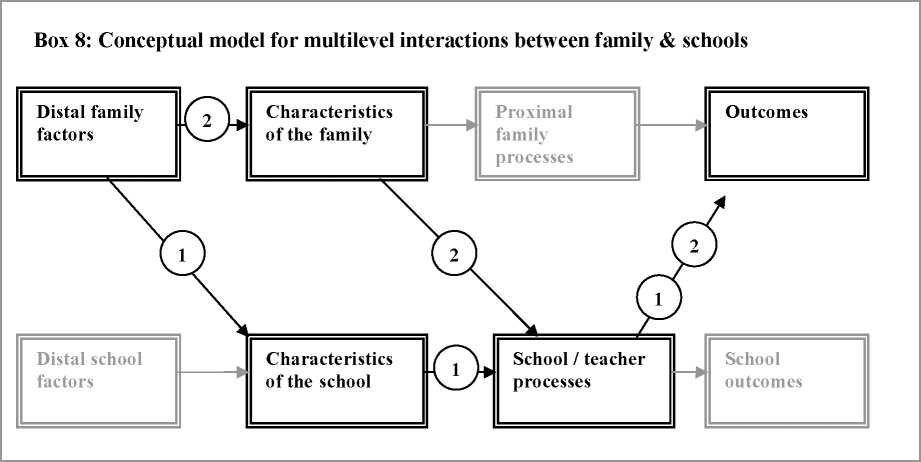The importance of context

A second channel for the effect of family distal factors is through an impact on the
relationships with teachers and the school (arrows 2). This has been studied mainly in
terms of social class differences (Bernstein, 1990, 1996). In qualitative analysis of
data collected from sociolinguistic experimentation over a series of years with
children from working class and middle class backgrounds, he found that the
language used by classroom teachers, which he termed restricted codes, were
constrained to favour their middle class students over their working class peers.
Comparable problems with language and identity were identified in an ethnographic
case study of a working class teacher in a London Education Action Zone (EAZ)
(Burns, 2001). Her study found that the teacher had to severely restrict her language
and pretend to adopt a middle class culture in order to progress in the school.
It has also been hypothesised that teachers may have higher expectations for middle
class children and so treat them preferentially leading to a relationship between family
background on perceived background and pupil teacher interactions. Similarly, the
cognitions and values of parents are important characteristics of the family context.
Parents bring these characteristics to the interactions they have with their children’s
school. They may, for example, be more proficient in interacting with teachers as well
as better able to support and reinforce traditional academic goals (Hess & Holloway,
1984; Slaughter & Epps, 1987). Similarly, teachers are likely to recognise these
characteristics of children and their parents and may respond more positively to them.
Teachers may come to make assumptions about parents’ cognitions and values from
signals provided by distal elements of social class (parental education, income and
occupational status) or on features of family structure without these necessarily being
mediated by actual family characteristics. These in turn can impact on teacher’s views
of pupils (Mortimore & Blackstone, 1982; Mortimore et al., 1988). These child-
teacher interactions are thus a channel for the effects indicated by arrow 2 in Box 8.
39
More intriguing information
1. Thresholds for Employment and Unemployment - a Spatial Analysis of German Regional Labour Markets 1992-20002. Pursuit of Competitive Advantages for Entrepreneurship: Development of Enterprise as a Learning Organization. International and Russian Experience
3. EMU: some unanswered questions
4. Weather Forecasting for Weather Derivatives
5. MANAGEMENT PRACTICES ON VIRGINIA DAIRY FARMS
6. The name is absent
7. The name is absent
8. FOREIGN AGRICULTURAL SERVICE PROGRAMS AND FOREIGN RELATIONS
9. The name is absent
10. Housing Market in Malaga: An Application of the Hedonic Methodology